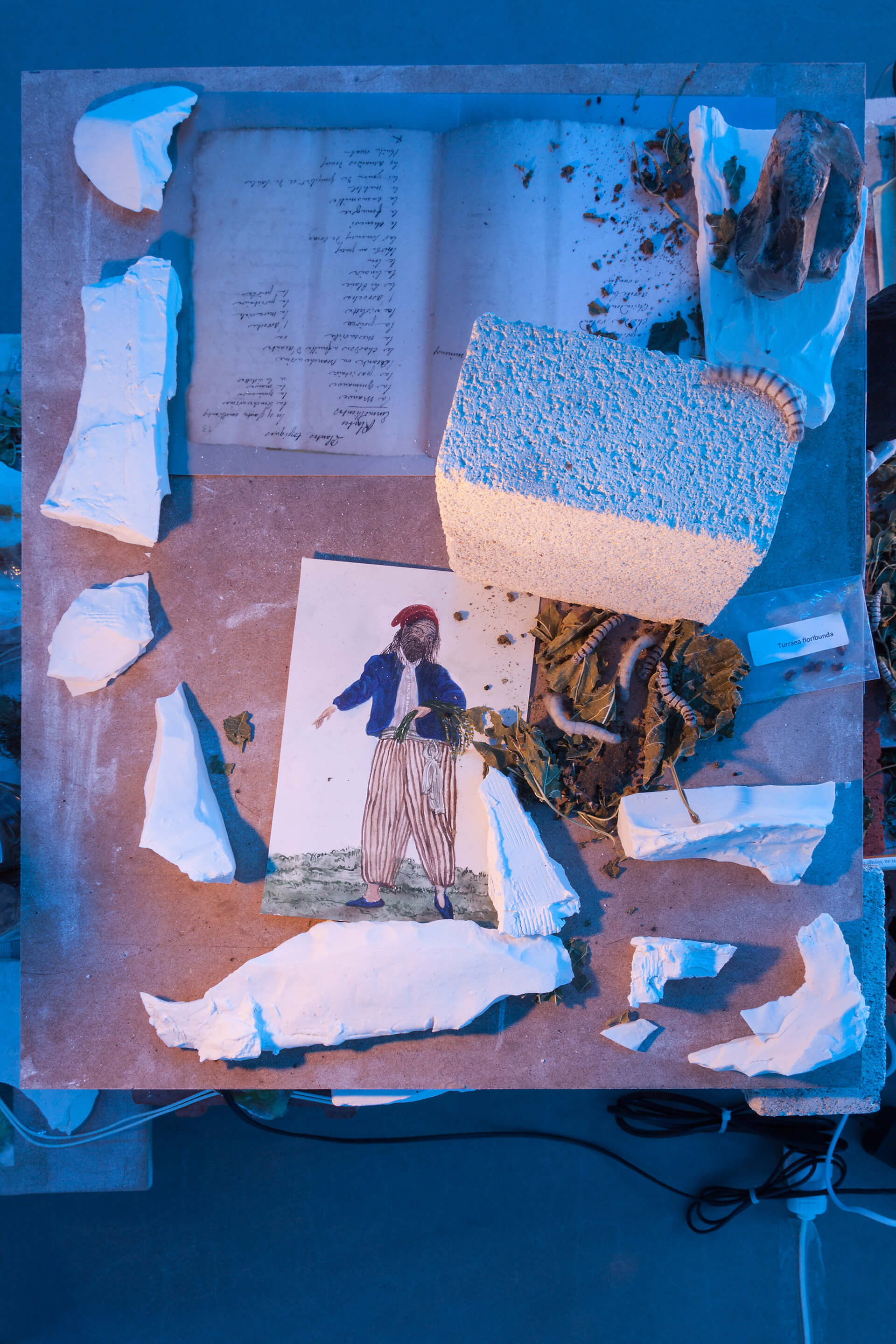During the conference at the Goethe-Institut, Lotte Arndt presents the different stages of the substantial artistic research of the project A Hard White Body (2017-2018) de Candice Lin.
As a follow-up a round table au Cube takes place on the next day, which invites to reflect on different aspects of the work and discuss its resonances in relation to the central questions of travelling narratives: how can narratives travel? How, from one exhibition to another, research is transformed and each time, questions its particular context? How could the trajectories of minority figures in history be evoked while maintaining a concerned perspective which refuses to be inserted in the grand national narratives.
“The elective affinities of Candice Lin
A discussion on the venues of the exhibition A Hard White Body (2017-2018) “
In her exhibition A Hard White Body (Un corps blanc exquis, Bétonsalon, Paris 2017; Portikus, Francfort 2018, Logan Center, Chicago 2018), the American artist Candice Lin intertwine by the yardstick of the neglected and minor aspects of historical figures’ life throughout the centuries. Thus, theblack American writer and politic thinker exiled in France, James Baldwin (1924-1987), meets with the French botanist Jeanne Baret (1740-1807), the first woman who traveled the world during the Bougainville trip, and Maria Sybilla Merian (1647-1717), artist and painter traveling in the 17th century in pursuit of her research on metamorphoses, insects and plants. Lin associates these historical figures who, several centuries apart, have experienced desires only possible through a life away from their native land. They met in the carrefour of the intersectional dominations, mocked and manipulated gender and race projections which were assigned to them; and even claimed them sometimes.
The artist follows the transformation of porcelain through a sculpture of an uncooked porcelain bedroom inspired by James Baldwin’s novel Giovanni’s Room. She impregnates it with a distillate of piss, water of the Seine and medicinal plants, to make of it a landscape of porcelain debris. The purpose is to evoke the remains of the World’s Fair in Chicago, ravaged by fire in 1894. Porcelain is that hard white body, subject of the Western lust in China. It was later used as a bacteriological filter that evokes purity, whiteness and stain resistance.
Through the association of porcelain and odorous liquids, archival documents and videos, drawings and sculptures, Lin brings into play stories of exoticism, virology and global commerce, and raises the issue of racialized language. She sets up processes of contamination between organic and inorganic materials, shaping unstable sculptural ecosystems that require constant attention. Everybody is invited to get physically engaged in these processes.
This meeting is organized in partnership with the Goethe-Institut Marokko.
It falls in the framework of travelling narratives, a regional program of art and research that aims at encouraging interactions between cultural operators in Morocco, Algeria, Egypt, Mauritania and Libya.
Through the organization of a cycle of residencies, exhibitions, screenings, meetings, workshops and conferences, this project strives to cross and connect micro-stories from North Africa in order to discover and disseminate endogenous stories of these territories and to collectively imagine new social and cultural utopias from these alternative narratives.
Travelling narratives is supported by AFAC – The Arab Fund for Arts and Culture, the Goethe-Institut Marokko, the Institut Français du Maroc, the Centre Jacques Berque and the Ministry of Culture and Communication in Morocco. The program is carried out in partnership with Townhouse, مؤسسة ورق للفنون – WaraQ art foundation and the cultural space Diadie Tabara Camara.
image: Candice Lin, A Hard White Body, a Soft White Worm, Installation view, Portikus, Frankfurt/Main, 2018
Hors les murs
Conférence: “Les affinités électives de Candice Lin”




